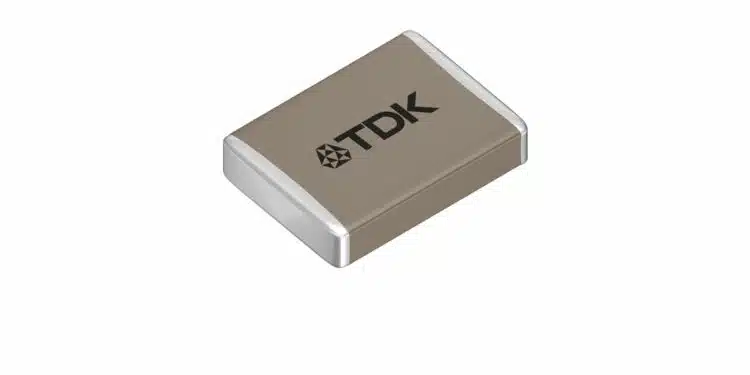TDK Corporation has expanded its line of CeraLink ceramic capacitor series B58043 in the EIA 2220 footprint by adding two new 900 V types – one with standard termination (B58043I9563M052) and one with soft termination (B58043E9563M052), ideal for 800V bus EV applications.
As EV electric vehicles with 800 V battery voltage are becoming more popular, these new components are obvious candidates because their optimal operating point is exactly at this voltage.
While the existing 500 V CeraLink series is aimed at 400 V inverters equipped with gallium nitride (GaN) transistors or silicon MOSFETs, the new 900 V parts with a withstanding voltage of more than 1 kV are targeted at 800 V inverters equipped with silicon carbide (SiC) MOSFETs or silicon IGBTs.
The small 5.7 x 5.0 x 1.6 mm SMD capacitors have an effective capacitance of 33 nF, but at the operating voltage of 800 V, they achieve 56 nF in large-signal applications such as power converters and inverters. This positive DC bias is due to the PLZT (lead lanthanum zirconium titanate) anti-ferroelectric ceramic dielectric, which behaves fundamentally differently from the Class II ceramic dielectrics in MLCCs with their negative DC bias effect.
This makes CeraLink capacitors a highly compact solution for snubbers, filters, flying capacitors, and DC-links, to name just a few functions, in power converters and inverters in automotive, renewable energy, and industrial drive applications. They are qualified to AEC-Q200 and their dissipation factor tanẟ remains below 0.025.
Features
- Increasing capacitance with DC bias up to the rated voltage
- For wide bandgap semiconductors like SiC and GaN
- High ripple current capability
- No limitation in dV/dt
- Operating temperature: -40 to +150 °C
- Qualification based on AEC-Q200 Rev. E
Applications
- Fast-switching power converters and inverters for automotive, renewable energy, and industrial drive applications































